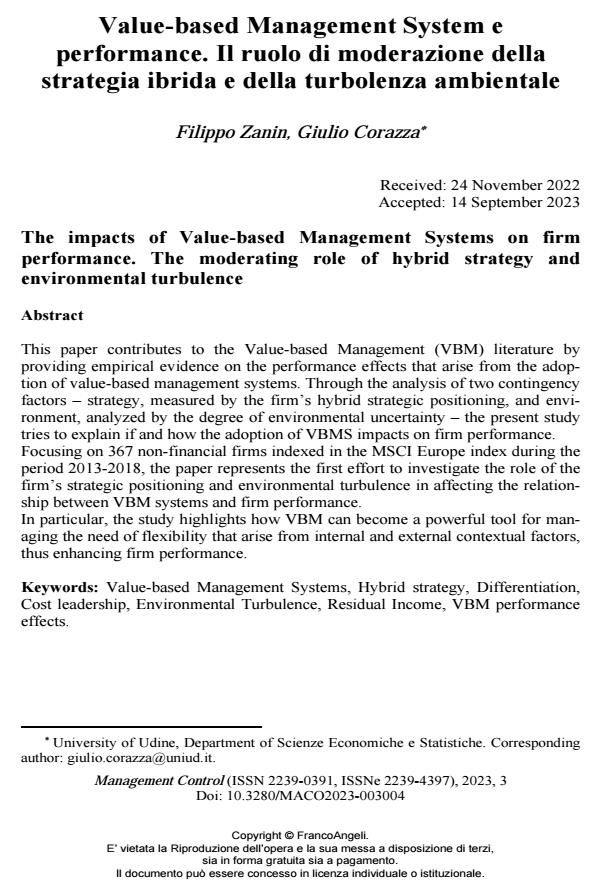Value-based Management System e performance. Il ruolo di moderazione della strategia ibrida e della turbolenza ambientale
Titolo Rivista MANAGEMENT CONTROL
Autori/Curatori Filippo Zanin, Giulio Corazza
Anno di pubblicazione 2024 Fascicolo 2023/3
Lingua Italiano Numero pagine 25 P. 63-87 Dimensione file 283 KB
DOI 10.3280/MACO2023-003004
Il DOI è il codice a barre della proprietà intellettuale: per saperne di più
clicca qui
Qui sotto puoi vedere in anteprima la prima pagina di questo articolo.
Se questo articolo ti interessa, lo puoi acquistare (e scaricare in formato pdf) seguendo le facili indicazioni per acquistare il download credit. Acquista Download Credits per scaricare questo Articolo in formato PDF

FrancoAngeli è membro della Publishers International Linking Association, Inc (PILA)associazione indipendente e non profit per facilitare (attraverso i servizi tecnologici implementati da CrossRef.org) l’accesso degli studiosi ai contenuti digitali nelle pubblicazioni professionali e scientifiche
This paper contributes to the Value-based Management (VBM) literature by providing empirical evidence on the performance effects that arise from the adop-tion of value-based management systems. Through the analysis of two contingen-cy factors – strategy, measured by the firm’s hybrid strategic positioning, and envi-ronment, analyzed by the degree of environmental uncertainty – the present study tries to explain if and how the adoption of VBMS impacts on firm performance. Focusing on 367 non-financial firms indexed in the MSCI Europe index during the period 2013-2018, the paper represents the first effort to investigate the role of the firm’s strategic positioning and environmental turbulence in affecting the relation-ship between VBM systems and firm performance. In particular, the study highlights how VBM can become a powerful tool for man-aging the need of flexibility that arise from internal and external contextual fac-tors, thus enhancing firm performance.
Parole chiave:Value-based Management Systems, Hybrid strategy, Differentiation, Cost leadership, Environmental Turbulence, Residual Income, VBM performance effects.
Filippo Zanin, Giulio Corazza, Value-based Management System e performance. Il ruolo di moderazione della strategia ibrida e della turbolenza ambientale in "MANAGEMENT CONTROL" 3/2023, pp 63-87, DOI: 10.3280/MACO2023-003004